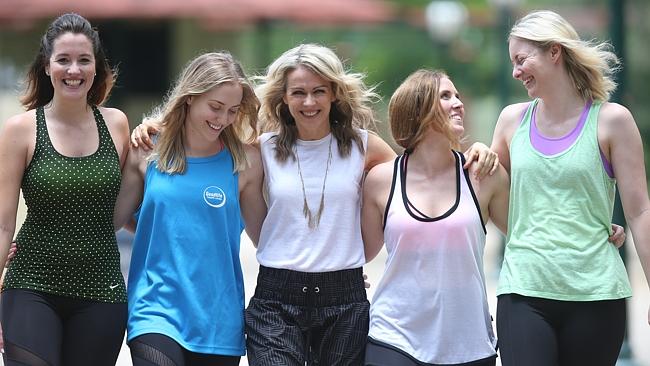Obesity crisis 1:54

Queensland has once again been crowned with a title it doesn’t want – we’re the heavyweight champion of Australia, with adults, on average weighing ten percent more than the rest of the country
- TEN
- 19 Nov 2014
- News
QUEENSLAND women are making healthier food choices than men but are more at risk of certain dietary deficiencies.
The latest Health of Queenslanders report, released yesterday, shows women are more likely to eat less takeaway, full-fat milk and fatty foods than men and also more likely to consume the recommended intake of fruit and vegetables.
Women were also found to be 48 per cent less likely to drink soft drink at least daily, yet women remain 2.2 times more likely to be at risk of anaemia and 70 per cent more likely to be deficient in iodine than men.
QUEENSLAND: Third of us don’t know we’re too fat
EPIDEMIC: Queenslanders so obese even morgues are struggling
When it comes to exercise, men and women were equal with about 6 in 10 adults sufficiently active but males were 8 per cent more likely to have participated in sport in the past year. The rate of exercising for men and women has stagnated since 2009 with an increase of just 1.5 per cent each year.
The report revealed Queensland continues to be the fattest state in Australia with two thirds of adults overweight or obese, which Chief Health Officer Jeannette Young contributed in part to how spread out the Queensland population is and the difficulty this brings to communicating the healthy living message.
Dr Young said if obesity levels continued to increase they could drive up the rates of cardio vascular disease and drive down life expectancy – areas which had both improved.
Heart disease-related deaths have decreased by 65 per cent in 25 years.

Amanda Lopes, Jessica Hyem, Lorna Jane Clarkson, Ash Brady and Courtney Wisemantel help spread the healthy living message yesterday. Source: News Corp Australia
“I am a bit concerned with the increased rates of overweight and obesity we could see those turn around and start increasing,” Dr Young said.
Life expectancy for women is now 84 years and 79 years for men.
“It’ll be a tight balance between whether the health system can continually evolve in terms of better treatments for heart disease for cancers and for stroke or whether the overwhelming number of people with those diseases due to overweight and obesity overtakes,” Dr Young said.
Cancer Council spokeswoman Katie Clift said the report was a “wake up call”.
“It’s about the individual taking responsibility.”
Fitness guru Lorna Jane Clarkson urged Queenslanders to “break the cycle” of obesity by educating children and prioritising their health.
“People know what to do, they just have to do it. The best thing about it is you can start today and feel the difference tomorrow. If you eat really well and actually move your body today you’re going to feel the benefits tomorrow.”

Queensland continues to be the fattest state in Australia, with two thirds of adults overweight or obese. Source: News Limited
THE FACTS:
* 500,000 daily smokers in Queensland, making up 14 per cent of people
* One in two males and one in three females will be diagnosed with cancer in their lifetime
* Cardiovascular disease is the leading cause of death but has decreased by 65 per cent over 25 years
* More than one third of cancers are caused by lifestyle choices like smoking and alcohol
* One in two Queenslanders aged 18-65 reported a mental health disorder in their life and 1 in 5 in the last 12 months
* One in six adults drinks at the riskiest level, which is more than two standard drinks a day and more than four drinks in a single occasion, at least monthly
* 29 per cent of children are overweight or obese
* Between 1995 and 2011–12, the average adult male put on 2.7kg and female 4kg, while height increased slightly (3cm for males and 2cm for females)
* The prevalence of self-reported adult obesity in very remote areas of Queensland was 48 per cent higher than major cities in 2014
* 58 per cent of adults consumed the recommended fruit serves daily in 2014 but only 9 per cent of adults consumed the recommended vegetable serves daily in 2014
